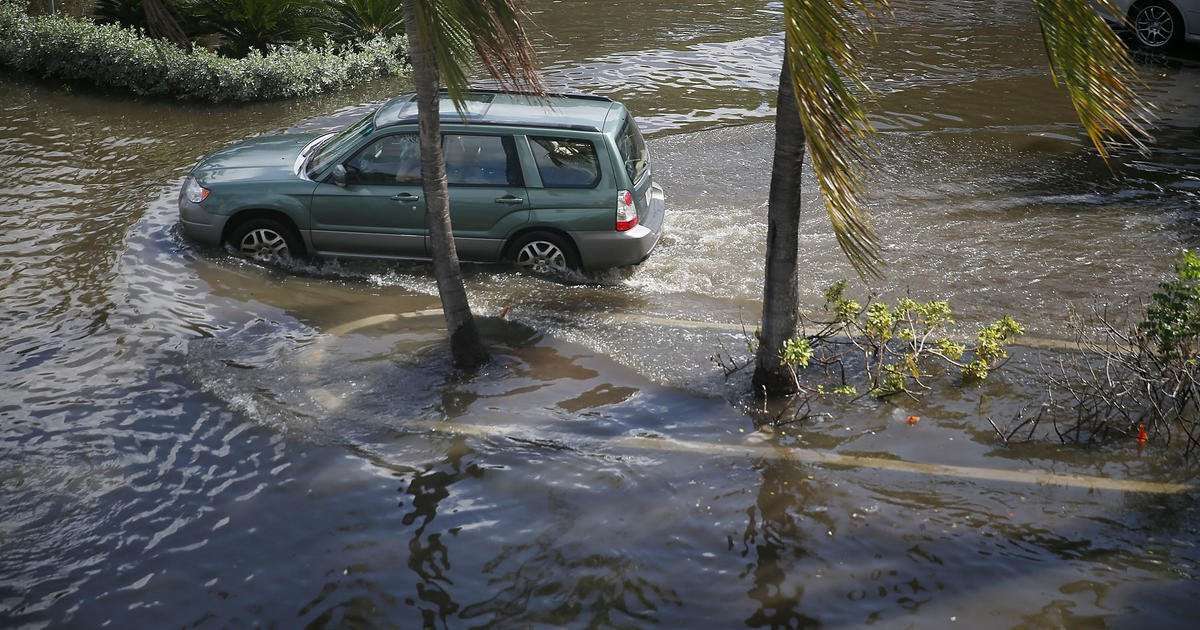Every coast in the U.S. is facing rapidly increasing high tide floods thanks to a "wobble" in the moon's orbit working in tandem with climate change-fueled rising sea levels.
A new study from NASA and the University of Hawaii, published recently in the journal Nature Climate Change, warns that upcoming changes in the moon's orbit could lead to record flooding on Earth in the next decade.
Through mapping the National Oceanic and Atmospheric Administration's (NOAA) sea-level rise scenarios, flooding thresholds and astronomical cycles, researchers found flooding in American coastal cities could be several multiples worse in the 2030s, when the next moon "wobble" is expected to begin. They expect the flooding to significantly damage infrastructure and displace communities.
While the study highlights the dire situation facing coastal cities, the lunar wobble is actually a natural occurrence, first reported in 1728. The moon's orbit is responsible for periods of both higher and lower tides about every 18.6 years, and they aren't dangerous in their own right.
"In half of the Moon's 18.6-year cycle, Earth's regular daily tides are suppressed: High tides are lower than normal, and low tides are higher than normal," NASA explains. "In the other half of the cycle, tides are amplified: High tides get higher, and low tides get lower. Global sea-level rise pushes high tides in only one direction – higher. So half of the 18.6-year lunar cycle counteracts the effect of sea-level rise on high tides, and the other half increases the effect."
But this time around, scientists are more concerned. With sea-level rise due to climate change, the next high tide floods are expected to be more intense and more frequent than ever before, exacerbating already grim predictions.
In 2019, NOAA reported more than 600 such floods. Scientists expect three to four times that amount in the mid-2030s, after sea-level rise has another decade to progress.
According to the study, these floods will exceed flooding thresholds around the country more often, and can also occur in clusters lasting more than a month, depending on the positions of the moon, Earth and sun. During certain alignments, floods could happen as frequently as every day or every other day.
"Low-lying areas near sea level are increasingly at risk and suffering due to the increased flooding, and it will only get worse," said NASA Administrator Bill Nelson. "The combination of the Moon's gravitational pull, rising sea levels, and climate change will continue to exacerbate coastal flooding on our coastlines and across the world."
Almost all U.S. mainland coastlines, Hawaii and Guam are expected to face these effects. Sea-level rise is already expected to make hundreds of thousands of square miles of coastline uninhabitable and potentially displace over 100 million people worldwide by the end of the century.
Researchers are hoping their findings will lead to more dedicated efforts to prevent as much damage as possible, both to the environment and people's livelihoods, before it's too late. While high tide floods don't involve as large an amount of water as hurricanes, the real danger lies in their frequency.
"It's the accumulated effect over time that will have an impact," said lead author Phil Thompson. "If it floods 10 or 15 times a month, a business can't keep operating with its parking lot under water. People lose their jobs because they can't get to work. Seeping cesspools become a public health issue."

Loki-L on July 14th, 2021 at 11:36 UTC »
The headline makes it sound like a bad disaster movie where something will happen to the moon in a few years that will cause disaster.
The truth is that the moon is in its normal 18.6 year nodal precession cycle where. As far as the moon is concerned nothing changes. It will not suddenly start wobbling. It will continue to do what it has done for many millions of years and part of that may be described as wobble.
What is happening that the moon undergoes a 18.6 year cycle during the height of that cycle tides are bigger than average and during the lowest point of that cycle tides are much smaller than average.
The geometry here is complicated and has to do with the moons orbit being tilted and that tilted orbit precessing around the earth like a wobbly spinning top.
The point is sometimes we have bigger tides for a few years and then a few years later we have smaller tides.
Currently we are in a part of a cycle where tides are getting smaller each year.
The fact that the tides are getting smaller is helping to cover up the fact that over all the water level is rising.
From 2026 on onward tides will get bigger again until they reach their biggest state in 2035 when they will shrink again.
Once tides will be getting bigger again this will combine with the underlying trend of sea level rise and we will get maximum tides much higher than anything we have had before.
After that we will have a period of about 9 years where tides will be getting smaller again while sea levels continue to rise and it will even out so that the worst tidal floods will look about equally bad each year for a little less than a decade. then tides will be getting bigger again and if you don't live high up or in some place with sensible water and flood infrastructure you will be having a bad time.
McHanna8 on July 14th, 2021 at 04:00 UTC »
Back of the line, moon!
stay_fr0sty on July 14th, 2021 at 03:27 UTC »
Okay. Put it on the list, we'll get to it.